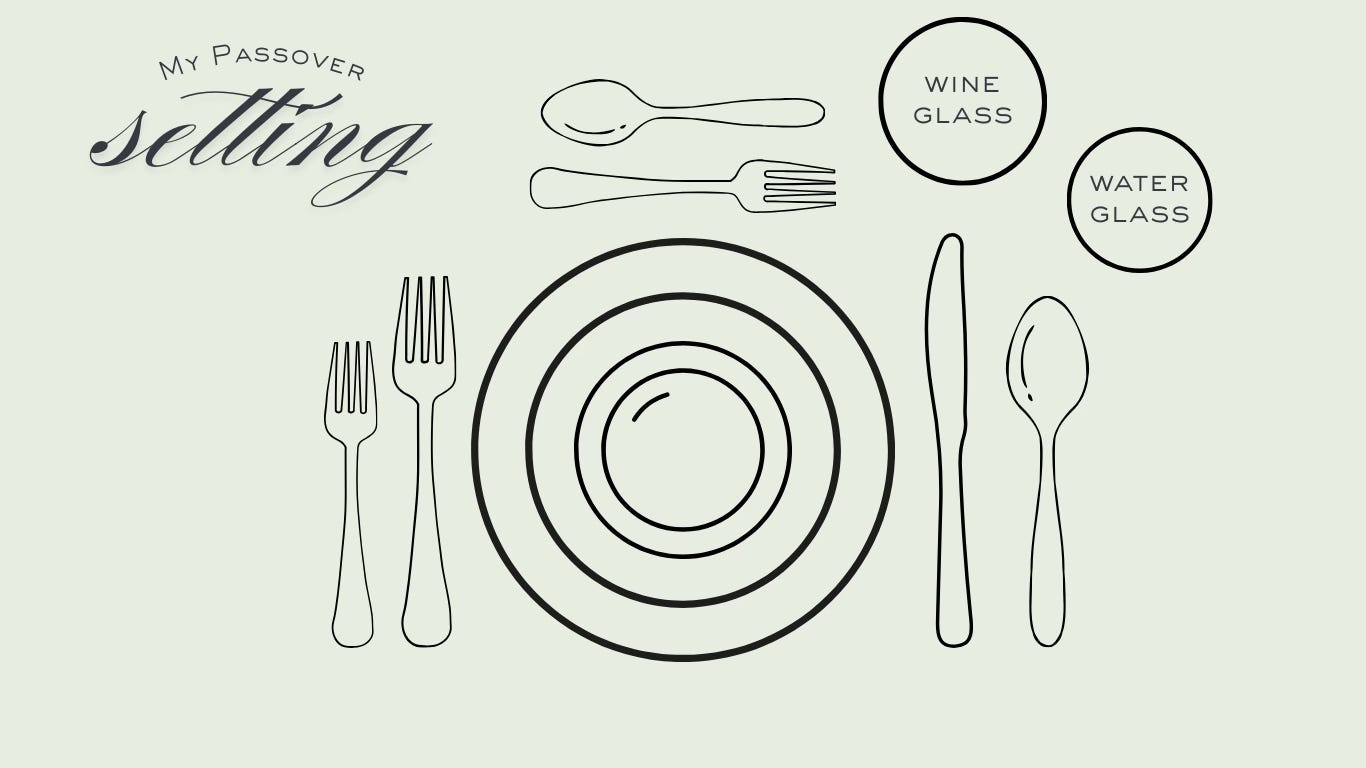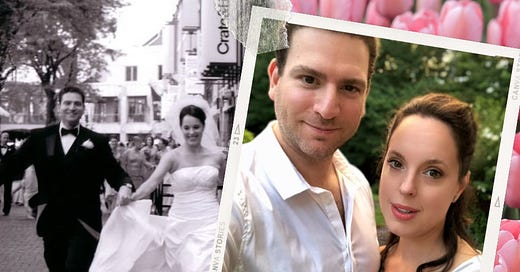A Seat at the Table: Honoring Family Through Heirlooms & Passover Traditions
How the dishes we set, and the recipes we choose, keep the memories of our loved ones alive.
I didn’t grow up in a particularly observant household. My parents were “elder” hippies, born in the early part of the Baby Boomer generation. Bucking against what was expected of them by their families, they had their “flower-child” life in Berkeley, California, during the tumultuous 1960’s. My parents had front row seats to the shake-up of cultural norms in America, and the emergence of the movements for equal rights & freedoms.
My father, a lapsed Russian Orthodox turned ‘Secular Humanist’, left the religious elements of our family life to my Conservative-Jewish Mother. But we were mostly not observant. I mean, we ate cheeseburgers! What we did keep were cultural touchpoints to my mother’s Jewish upbringing. We had naming ceremonies, some traditional foods (cheese blintzes: mmmmm!), Temple on High Holidays, and occasionally sort-of attended (maybe ‘visited’ is a better word) Hebrew School for a few years. Even so, there was an essence and understanding of being Jewish that we felt strongly. Love of family, emphasis on education & civic duty, and leaving the world a better place than when we entered it, were core values we held in our hearts.
First Comes Love… Then Comes a Crash Course on Passover
Passover wasn’t a “thing” for me until I met my future husband, in my mid-twenties. As one does after several months of dating, I was invited to join his family (in Florida), for a Passover together. This lovestruck girl from Boston, who was more hippie than frum, suddenly had a crash course in more traditional Jewish cultural learning, courtesy of my soon-to-be in-laws.
I needed to know the differences between parve, dairy, and meat meals (never mind the special kosher for Passover designation used once a year!) and their accompanying (and strictly divided) china and utensils. What are the symbolic foods that go on a Seder plate? What do you mean there are TWO Passover Seders? And, what the heck does eating salted eggs have to do with the story of Moses?
These questions and a whole lot of other gaps in my Jewish education (do you know what a Pidyon Haben is? I sure didn’t when my first son was born! Look it up, it’s a trip) grew as I married into a Jewish family, and my appreciation for the food symbolism, cultural legacy, and traditional preparations expanded with it.
Keeping Memories Alive Through the Table We Set
One of the key elements of Passover is the ceremonial table setting and menu. These help provide the structural platform for the Seder, and the traditional foods served. Being a 2nd grade Hebrew School drop out, all of these items were pretty foreign to me, but I learned quickly that there are a few key pieces. Family Seder Plates, Matzah covers, and ornate Kiddish Cups are not only religiously important, but deeply meaningful in my husband’s family. Many of these items have been passed from one generation to the next, and what I really embraced was the connection from the past to the present, with a beautifully set table, fresh florals, and special family pieces that bring dear loved ones back to the table.
Oh! And, the food is really good too!
A Passover Table Woven with Love and Legacy
In my book, Seasons around the Table, I really emphasize using vintage and heirloom family pieces like china, crystal and serving ware to create beautiful settings. Don’t leave those serving trays and fancy plates to be forgotten in some dark closet or attic! Dust them off and enjoy them! It’s also a way to also remember; for me to make sure my Grandma Rodman has a seat at the table when I use her giant cut crystal fruit bowl as a vase, or Grandma Helen’s serving tray for gefilte fish, or Aunt Clarice’s pretty blue-flowered china settings that I use ‘just because’. Family isn’t just about who is literally sitting at the table, but also remembering those dear ones that we so wish were still present.
Spring Table Essentials: Passover Tableware & Seasonal Touches
Let’s get the simple tablescape design down, before we start adding some basic Passover elements. To do that, ask yourself 3 questions;
How many people am I hosting? The number of guests isn’t just important for the amount of dishes you’ll serve, but also how many settings you’ll need.
Formal or Informal? A Passover Seder, or any dinner party, can be as formal or informal as you want it to be. It’s easier to decide ahead of time.
What color palette am I using? I know it seems a little silly, but color plays a HUGE role in tablescape design, from flowers to glasses, table linens to dishware, figure out what you have already on your shelves and play. I love using pastels for Spring, but the sky is the limit.
Honoring Tradition with Every Plate and Petal
Once you’ve answered the above questions, it becomes easy. For me, my Passover table is typically semi-formal and very similar to any other dinner party table. I’ll use these staples to set the scene;
A table runner
Woven placemats or decorative chargers.
A medium sized floral arrangement of simple Spring flowers, like tulips, roses, ranaculus, and iris.
China or ceramic place settings that include a dinner plate and a salad plate. I reserve the soup bowls (for matzoh-ball soup!) to be plated in my kitchen and brought out steaming hot.
Remember; your settings don’t even have to match! If you can find a common theme (flowers, complimentary colors, or even shape), you’re good to go.
Cloth napkins for dinner, but for the Passover Story, I top the decorative plates with disposable cocktail napkins for soaking up the “plagues” (when we dip our finger into our wine glasses to mark the recitation of the plagues with wine drops. Using disposable paper napkins makes the clean up a breeze!). I like to use wrinkle-free cloth napkins for dinner, but linen is also lovely.
Speaking of wine… I’ll set a red wine glass and water glass at each setting. Got to get those four cups in of wine in!
For cutlery, (L to R); a salad fork, dinner fork, butter knife, and soup spoon are my standard, but sometimes I’ll jazz it up with a dessert fork and spoon at the head the plate too (see graphic).

Seder Specific Items
There are several Seder specific items that you can use, but for me, I go pretty simply.
2 Kiddish Cups (one for Elijah, and one for the Seder leader)
1 Matzoh Plate with Cover
Candles and Candlesticks for blessing
A small pitcher of clean water and shallow bowl for hand washing
Several Haggadot
That’s it. Clean and Simple.
Like I mentioned before, your table can be as simple or as elaborate as you like! Each family has their own way of doing it, but the important part is just doing it. I hope you feel more confident setting your Passover table with these helpful tips… and that you’ll set out those plates you inherited from your great-great aunt this year!
Stay tuned for more hosting advice and recipes!
Thanks for reading! Subscribe for free to receive new posts and support my work.








This is lovely! Thanks for sharing. Maybe next year I'll be this organized!
Beautiful! We just attended our congregational Seder last night. I’ve never hosted my own at home but now I’m thinking next year I might! 💙